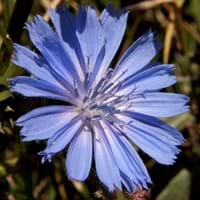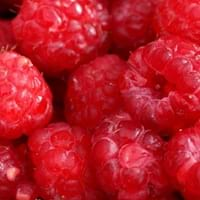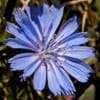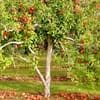Life Span
Perennial
Perennial
Type
Flowering Plants, Shrubs, Vegetable
Fruit
Origin
Mediterranean
Hybrid origin
Types
Belgian Endive, Red Belgian Endive, Curly Endive (a.k.a. Frisee), Escarole, Radicchio (Chioggia) and Radicchio (Chioggia)
PRIMOCANE RED RASPBERRIES ,FLORICANE RED RASPBERRIES
Number of Varieties
Not Available
Habitat
Grassland, Mediterranean region, Wild
Forests, Mountains, Tree canopies
USDA Hardiness Zone
3-9
4-8
Sunset Zone
A1, A2, A3, H1, H2, 1a, 1b, 2a, 2b, 3a, 3b, 4, 5, 6, 7, 8, 9, 10, 11, 12, 13, 14, 15, 16, 17, 18, 19, 20, 21, 22, 23, 24
A1, A2, A3, 1a, 1b, 2a, 2b, 3a, 3b, 4, 5, 6, 7, 8, 9, 10, 11, 12, 13, 14, 15, 16, 17, 18, 19, 20, 21, 22, 23, 24
Habit
Clump-Forming
Upright/Erect
Flower Color Modifier
Not Applicable
Bicolor
Leaf Color in Spring
Green
Green
Leaf Color in Summer
Green
Green
Leaf Color in Fall
Green
Green
Leaf Color in Winter
Green
Light Green
Leaf Shape
Oblong
Toothed
Plant Season
Summer
Spring, Summer, Fall
Sunlight
Full Sun, Part sun
Full Sun, Partial Sun
Type of Soil
Loamy, Sandy
Loam, Sand
The pH of Soil
Acidic, Alkaline, Neutral
Acidic, Neutral
Soil Drainage
Well drained
Well drained
Bloom Time
Summer
Spring, Summer
Tolerances
Not Available
Drought
Where to Plant?
Ground
Container, Ground, Pot
How to Plant?
Seedlings
Suckers
Plant Maintenance
Medium
Medium
Watering Requirements
Keep the ground moist but not water-logged, Prefer drip-irrigation instead of Over-head watering, Requires regular watering, Requires watering in the growing season
Average Water Needs
In Summer
Lots of watering
Lots of watering
In Spring
Moderate
Moderate
In Winter
Average Water
Average Water
Soil pH
Acidic, Alkaline, Neutral
Acidic, Neutral
Soil Type
Loamy, Sandy
Loam, Sand
Soil Drainage Capacity
Well drained
Well drained
Sun Exposure
Full Sun, Part sun
Full Sun, Partial Sun
Pruning
Cut or pinch the stems, Prune prior to new growth, Prune to stimulate growth, Remove dead or diseased plant parts, Remove deadheads
Remove damaged leaves, Remove dead branches, Remove dead leaves
Fertilizers
All-Purpose Liquid Fertilizer
All-Purpose Liquid Fertilizer
Pests and Diseases
Aphids, Loopers, Root rot, Viruses, Worms
Red blotch
Plant Tolerance
Drought
Drought
Flowers
Yes
Insignificant
Flower Petal Number
Not Available
Single
Foliage Texture
Medium
Medium
Foliage Sheen
Matte
Matte
Attracts
Butterflies
Birds, Butterflies
Allergy
Not Available
Abdominal pain, breathing problems, Diarrhea, Eczema, Fainting, Itchiness, Nausea, Vomiting, wheezing
Aesthetic Uses
Not Used For Aesthetic Purpose
bank hedging, Cottage Garden, Slopes hedging
Beauty Benefits
Not Available
Not Available
Environmental Uses
Air purification
Air purification
Medicinal Uses
Cancer, Digestive disorders, Inflammation, Liver problems, Stomach pain
anti-inflammatory, Anti-oxidant, Cancer, Improve heart health, Liver Protection, Skin Whitening and Pigmentation Medicine, Weight loss
Part of Plant Used
Leaves, Root
Fruits, Leaves, Root
Other Uses
Used as an ingredient in coffee
Jam, Jelly, Used As Food, Used for its medicinal properties
Used As Indoor Plant
No
No
Used As Outdoor Plant
Yes
Yes
Garden Design
Not Available
Edible, Fruit / Fruit Tree, Hedges
Botanical Name
Cichorium intybus
RUBUS 'Autumn Bliss'
Common Name
Blue daisy, blue dandelion, blue sailors, blue weed, bunk, coffeeweed, cornflower, hendibeh, horseweed, ragged sailors, succory, wild bachelor's buttons, and wild endive
Red Raspberry
In Hindi
कासनी
रूबस idaeus
In German
Chicoree
Himbeere
In French
chicorée
Rubus idaeus
In Spanish
achicoria
Rubus idaeus
In Portuguese
chicória
Rubus idaeus
In Polish
cykoria
Rubusidaeus
In Latin
pancratium
Rubus idaeus
Phylum
Magnoliophyta
Magnoliophyta
Class
Magnoliopsida
Magnoliopsida
Family
Asteraceae
Rosaceae
Clade
Angiosperms, Asterids, Eudicots
Angiosperms, Eudicots, Rosids
Subfamily
Cichorioideae
Rosoideae
Number of Species
Not Available
Not Available
Importance of Chicory and Red Raspberry
Want to have the most appropriate plant for your garden? You might want to know the importance of Chicory and Red Raspberry. Basically, these two plants vary in many aspects. Compare Chicory and Red Raspberry as they differ in many characteristics such as their life, care, benefits, facts, etc. Every gardener must at least have the slightest clue about the plants he wants to plant in his garden. Compare their benefits, which differ in many ways like facts and uses. The medicinal use of Chicory is Cancer, Digestive disorders, Inflammation, Liver problems and Stomach pain whereas of Red Raspberry is anti-inflammatory, Anti-oxidant, Cancer, Improve heart health, Liver Protection, Skin Whitening and Pigmentation Medicine and Weight loss. Chicory has beauty benefits as follows: Not Available while Red Raspberry has beauty benefits as follows: Not Available.
Compare Facts of Chicory vs Red Raspberry
How to choose the best garden plant for your garden depending upon its facts? Here garden plant comparison will help you to solve this query. Compare the facts of Chicory vs Red Raspberry and know which one to choose. As garden plants have benefits and other uses, allergy is also a major drawback of plants for some people. Allergic reactions of Chicory are Not Available whereas of Red Raspberry have Abdominal pain, breathing problems, Diarrhea, Eczema, Fainting, Itchiness, Nausea, Vomiting and wheezing respectively. Having a fruit bearing plant in your garden can be a plus point of your garden. Chicory has no showy fruits and Red Raspberry has showy fruits. Also Chicory is flowering and Red Raspberry is not flowering . You can compare Chicory and Red Raspberry facts and facts of other plants too.





